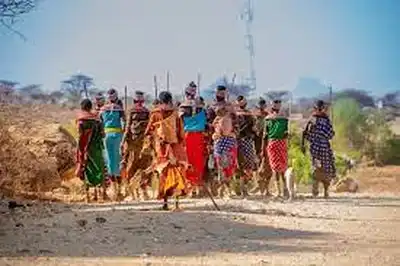How Many Tribes Are In South Africa?

South Africa’s black population is divided into four main ethnic groups: Nguni (Zulu, Xhosa, Ndebele, and Swazi), Sotho, Shangaan-Tsonga, and Venda. There seem to be multiple subgroups within these, the greatest of which are the Zulus and Xhosa (two subgroups of the Nguni group).Africa is home to over 50 independent countries and is home to approximately 16% of the world’s population. This equates to more than 1.2 billion people. South Africa’s constitution, with all 11 official languages recognized by law, may best reflect this diversity.
South Africa
South Africa is known as the Rainbow Nation, this is because of the country’s cultural and ethnic diversity. South Africa’s population is one of the most diverse and complex in the world. Over 41 million South Africans are black, 4.5 million white, 4.6 million colored, and approximately 1.3 million Indian or Asian. Approximately 51.3% are female, while 48.7% are males.
The South African Tribes
The Zulu People: The Zulu tribe of South Africa is the country’s most populous tribe. They moved away from the Great Central African Lake area in the 1500s. They are from KwaZulu-Natal. The Zulus are regarded as elites with high moral standards and natural dignity.
Zulus of today are socially progressive. While predominantly Christian, the Zulu maintain faith in their godly being. Traditional clothing is only worn on special occasions, the Zulus are deeply connected to their ancestral and historical roots. The Zulus are said to be a cheerful and hospitable people, and the concept of Ubuntu is attributed to them.
Khosian Tribe: The Khoisan are known as South Africa’s first people and are known for their close relationship with nature, subsistence lifestyle, and language that consists of clicking sounds.
Unfortunately, they are also synonymous with the plight of minorities in Southern Africa, having been hunted, victimized, and pushed off their land.
Xhosa Tribe: They are culturally related to the Zulu clan and migrated from the Eastern Cape.
Nelson Mandela is the most well-known member of the Xhosa Tribe.
Sotho Tribe: The Sotho Tribe are divided into three main groups. These are the Southern Sotho, the Northern Sotho and the Tswana.They are known as the cowboys of the southern plains because of their exceptional horseback riding skills while herding their cattle. They can be identified by their thick colorful blankets and conical hats.
Swazi Tribe: This tribe has a population of over 500,000 people in South Africa. They are from Swaziland, a sovereign state bordered by South Africa and Mozambique.
- When will South Africans Stop Wearing Masks?
- Where Has it Snowed in South Africa?
- Where In South Africa Can I Purchase Edible Clay?
- Where To Buy Leather In South Africa
- How Many Bricks are in a Pallet in South Africa?
- How Many People Have Been Vaccinated in South Africa?
- How Many Teachers Are in South Africa?
- How Many Towns Are in South Africa?
Ndebele: The origins of the Ndebele are unknown, but they are related to the Zulus and the Xhosas. They’re extremely inventive. As a result, they have some of the most ornately decorated houses, beadwork, and clothing in the world. The Ndebele tribes are considered Zulu cousins and thus share linguistic similarities. The Ndebele, on the other hand, are distinct in their expression of culture and beliefs.
Venda Tribe: They live primarily in limpolopo. They were given their own province, but it was not included in South Africa’s constitution until 1994.
The San tribe: The San are a minority tribe. Few of these peaceful Africans live as their forefathers did. San culture can still be found in places where it has been purposefully preserved, and ancient San rock art can be seen at a number of locations throughout Southern Africa. The San had been hunter-gatherers who roamed vast swaths of grasslands across southern Africa. The Bushmen have been pushed into ever-smaller ranges for a variety of reasons, including mining, farming, and the establishment of national parks.
Conclusion
The San and Khoekhoe were South Africa’s first inhabitants. The Northern and Western Cape provinces are home to the majority of the colored population. The Afrikaner population is particularly concentrated in the provinces of Gauteng and Free State. South Africa has eleven official languages.
Share This





